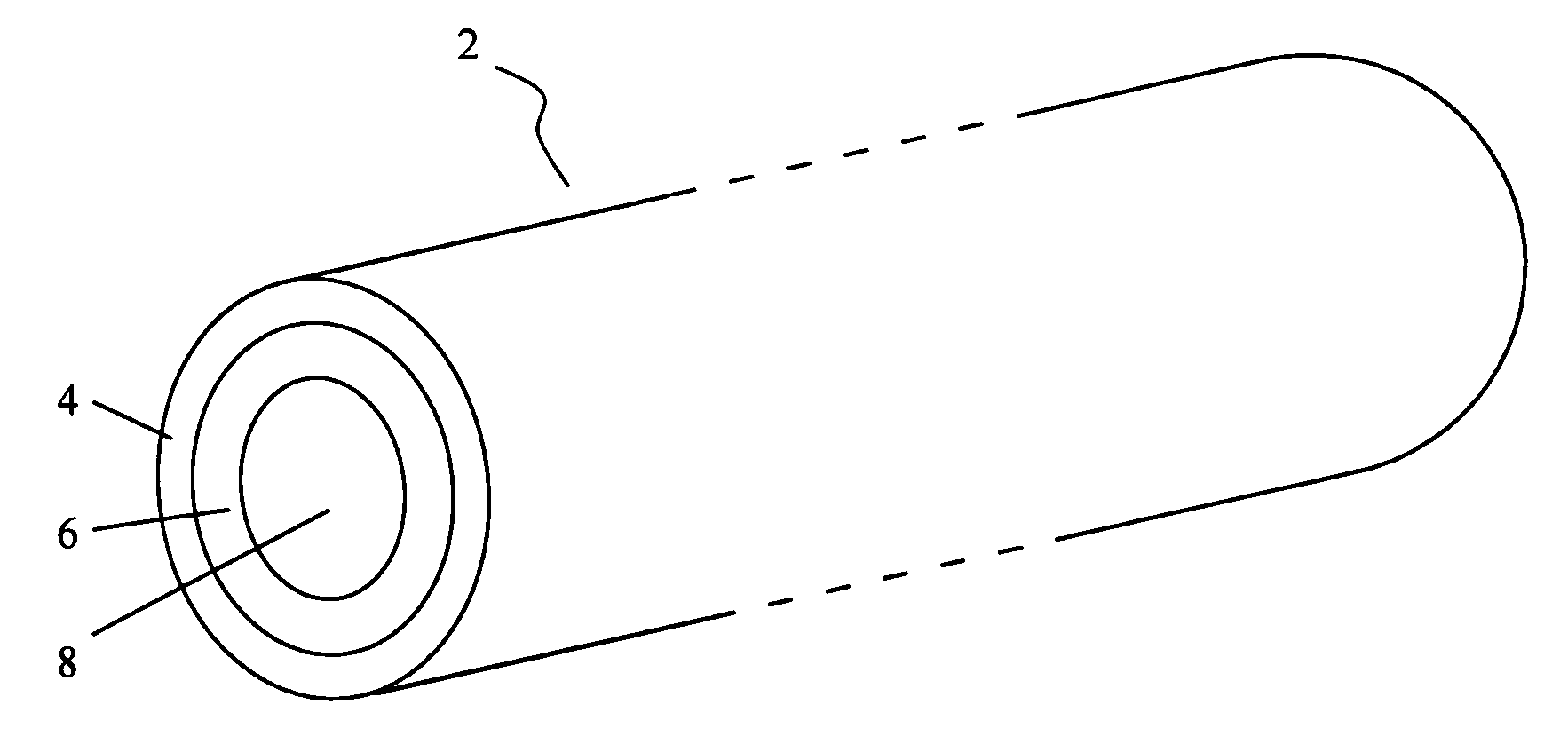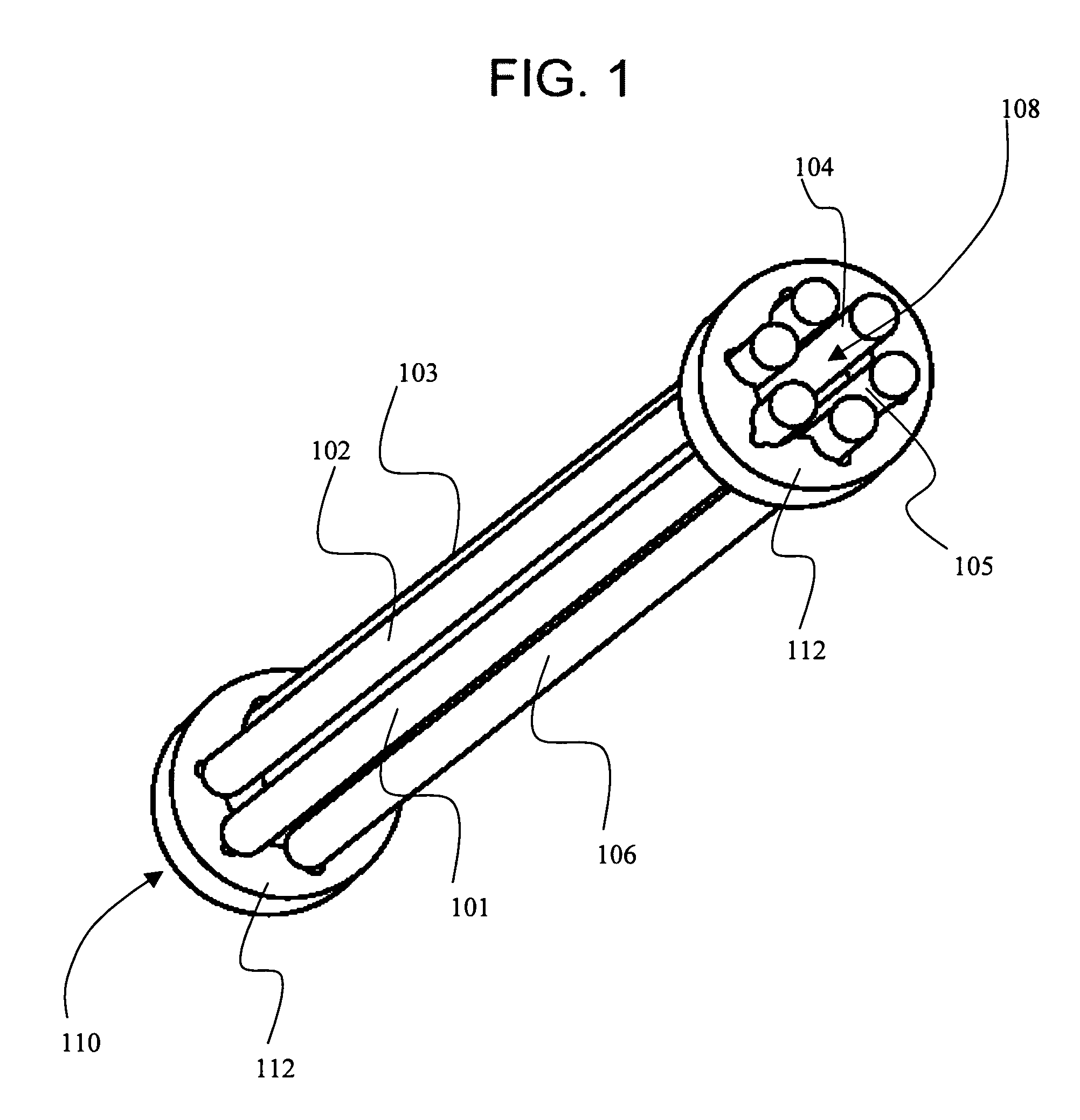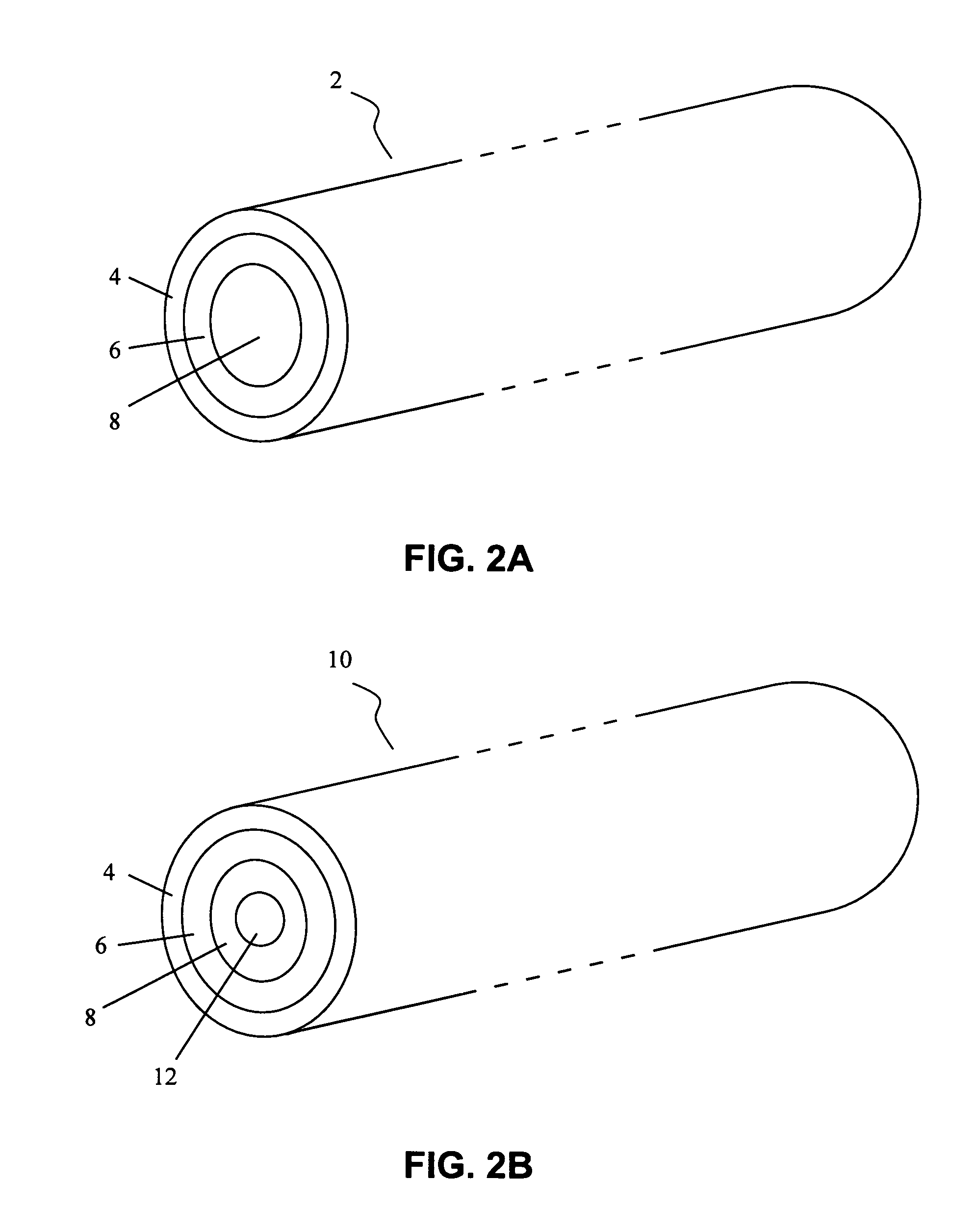Mass spectrometer multipole device
a mass spectrometer and multi-pole technology, applied in the field of analytical methods, can solve the problems of prone to “rf drooping” and areas of reduced rf in prior art devices
- Summary
- Abstract
- Description
- Claims
- Application Information
AI Technical Summary
Benefits of technology
Problems solved by technology
Method used
Image
Examples
example 1
[0063]Although countless embodiments are possible, this example describes a collision cell comprising a hexapole with aluminum rods of diameter 2.54 mm, a 2 R0 of 4.4 mm, and a device length of 150 mm. In this example, 4 volts DC is applied from end to end and a stray ion current of 33 nano-amps is assumed to strike the center area of each rod. A maximum center rod deviation of 0.1 volt is set as one criteria, which results in a calculated maximum end to end resistance of 12 Mega Ohms. The end to end rod resistance is the product of the resistivity times the length divided by the circumference and the thickness. If we use a resistive potentiometer ink from Lord / METECH with a finished cured thickness of 16 microns, then the resistivity should be <1.02 kOhm / cm. Dividing by 0.0016 cm suggests a resistivity of <637 kOhm per square. The rod-set to rod-set capacitance of a similar hexapole measured 50 pf. This is equivalent for our purposes to a 33 pf capacitance to virtual ground for eac...
example 2
[0066]This embodiment comprises a quadrupole mass filter constructed with coaxial distributed capacitance. The rods, perhaps with hyperbolic faces, can be approximated as 0.8 cm diameter round rods of a length of 0.2 m. The length could perhaps be reduced if the ions are slowed down in the center by the applying a dc voltage to a center tap point. The rods would have to be biased to the U+ and U− voltages. We will assume a 10V end to end voltage although numerous combinations of voltages along the length are possible. If the rods could be made out of aluminum, a thinner anodization layer should be specified, e.g., less than a micron. The thinner layer decreases the RF voltage drop so that variations in layer thickness do not cause RF voltage variations on the outside surface of the rods, leading to field aberrations and poor ion mass-filtering. Sub-micron anodized aluminum layers are common in electrolytic capacitors.
[0067]The RF voltage drop through the resistive layer is insignifi...
PUM
 Login to View More
Login to View More Abstract
Description
Claims
Application Information
 Login to View More
Login to View More - R&D
- Intellectual Property
- Life Sciences
- Materials
- Tech Scout
- Unparalleled Data Quality
- Higher Quality Content
- 60% Fewer Hallucinations
Browse by: Latest US Patents, China's latest patents, Technical Efficacy Thesaurus, Application Domain, Technology Topic, Popular Technical Reports.
© 2025 PatSnap. All rights reserved.Legal|Privacy policy|Modern Slavery Act Transparency Statement|Sitemap|About US| Contact US: help@patsnap.com



